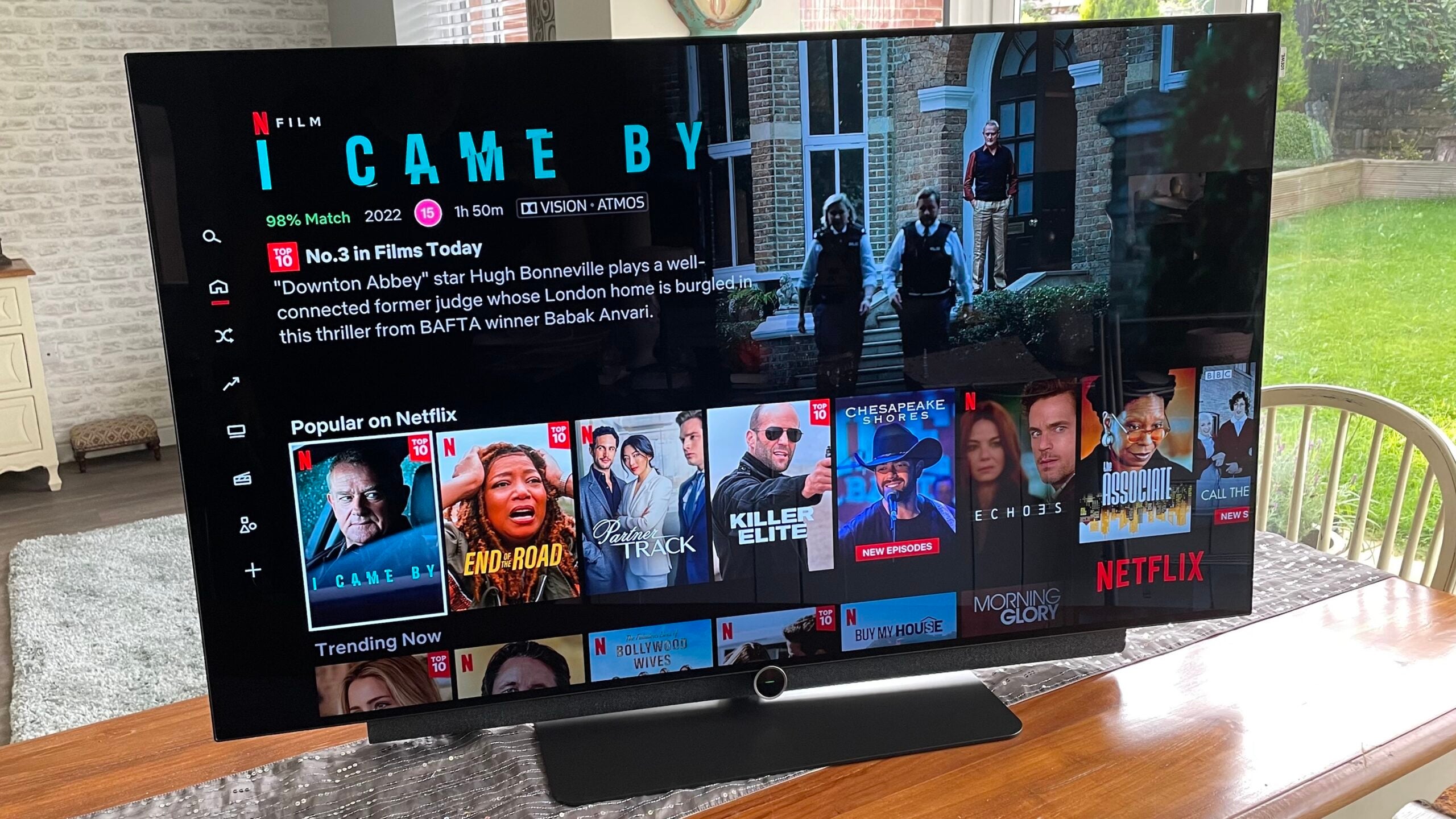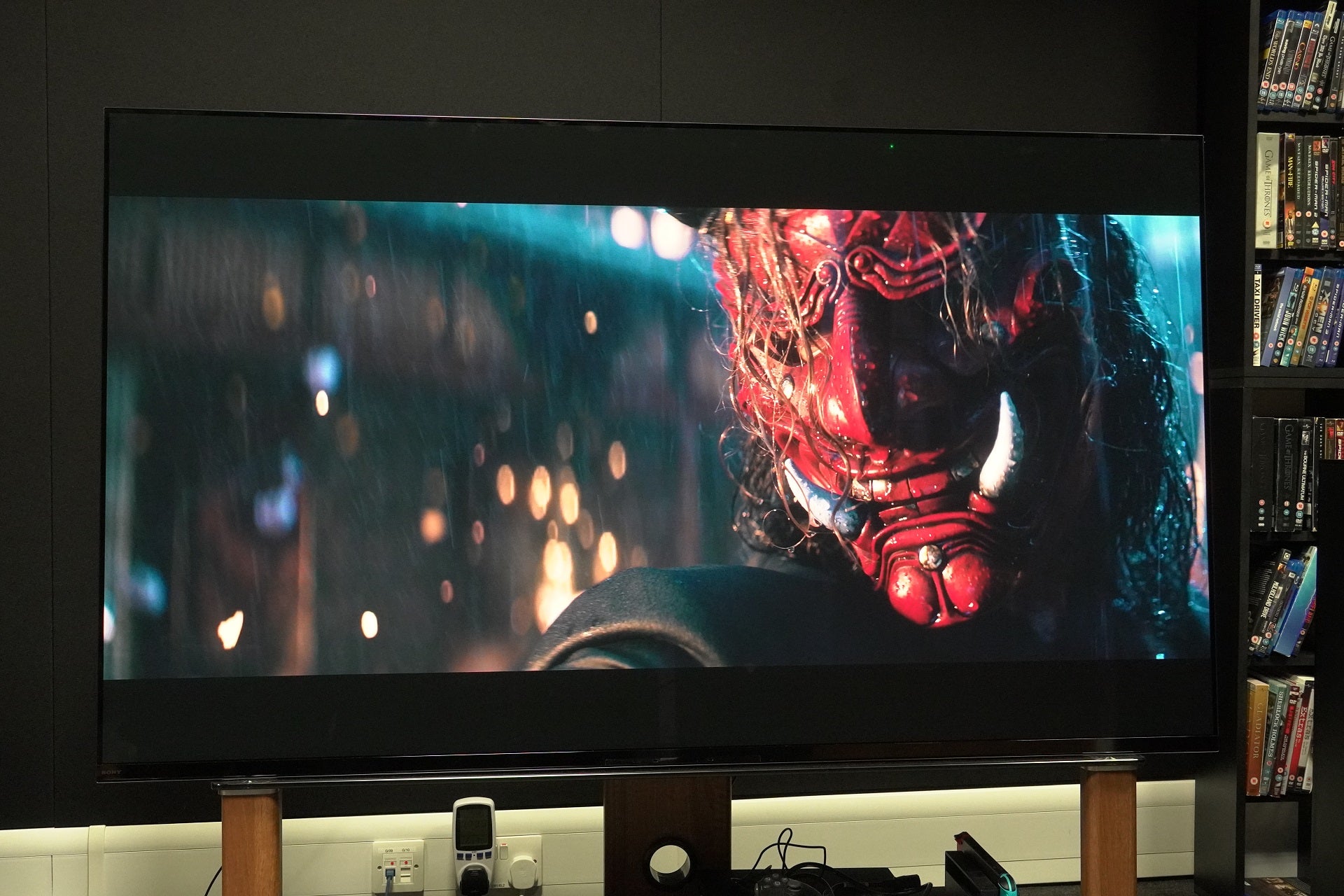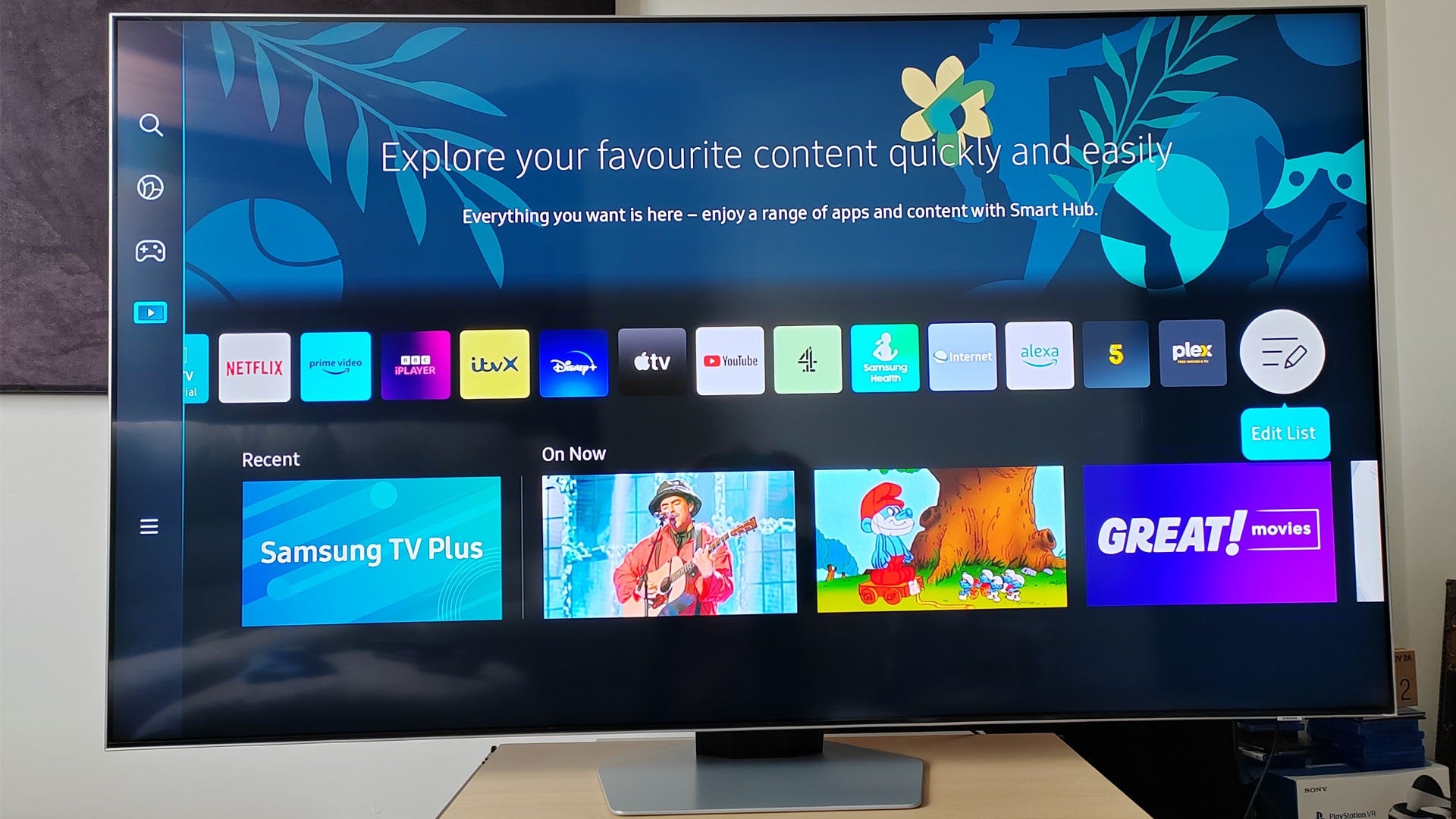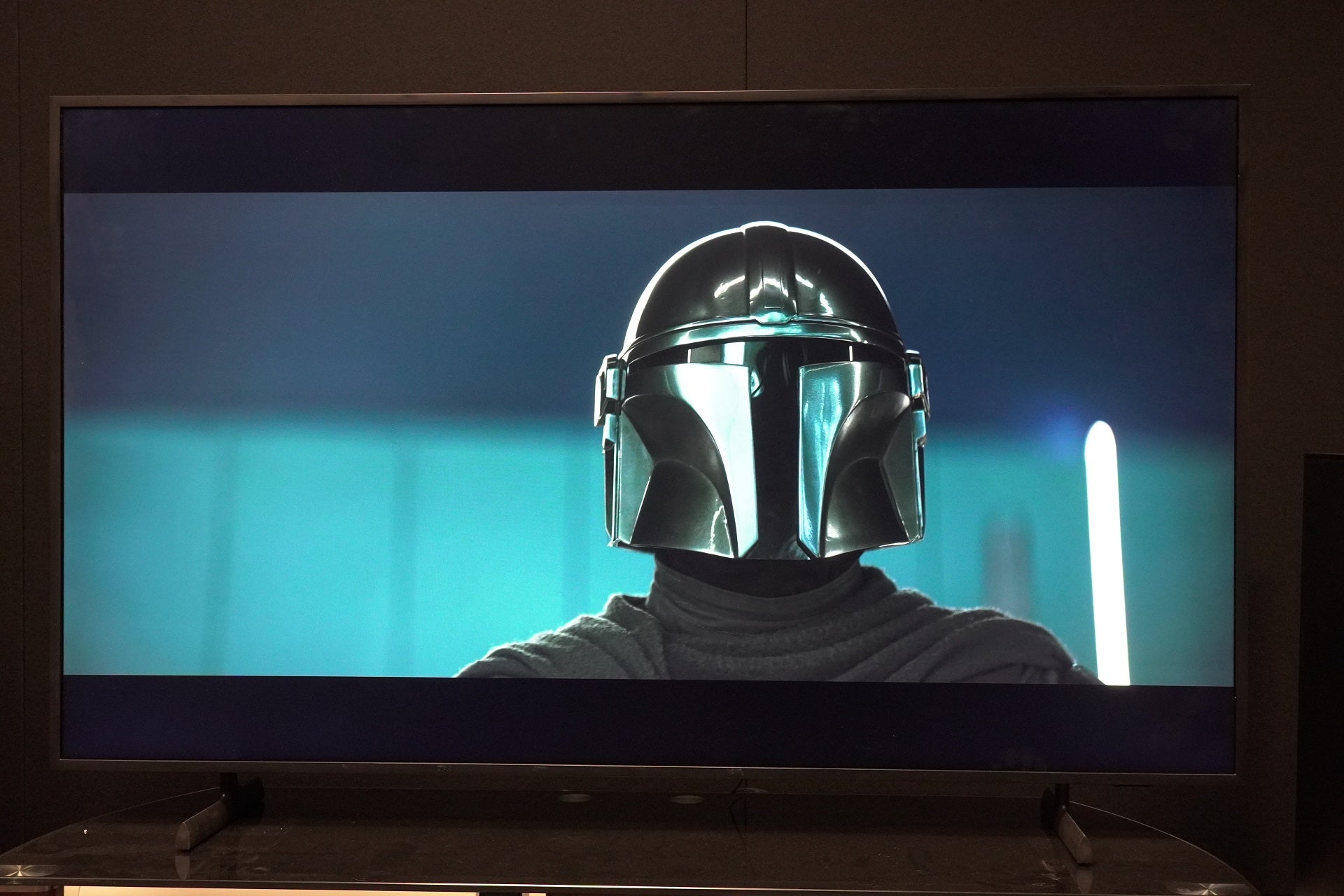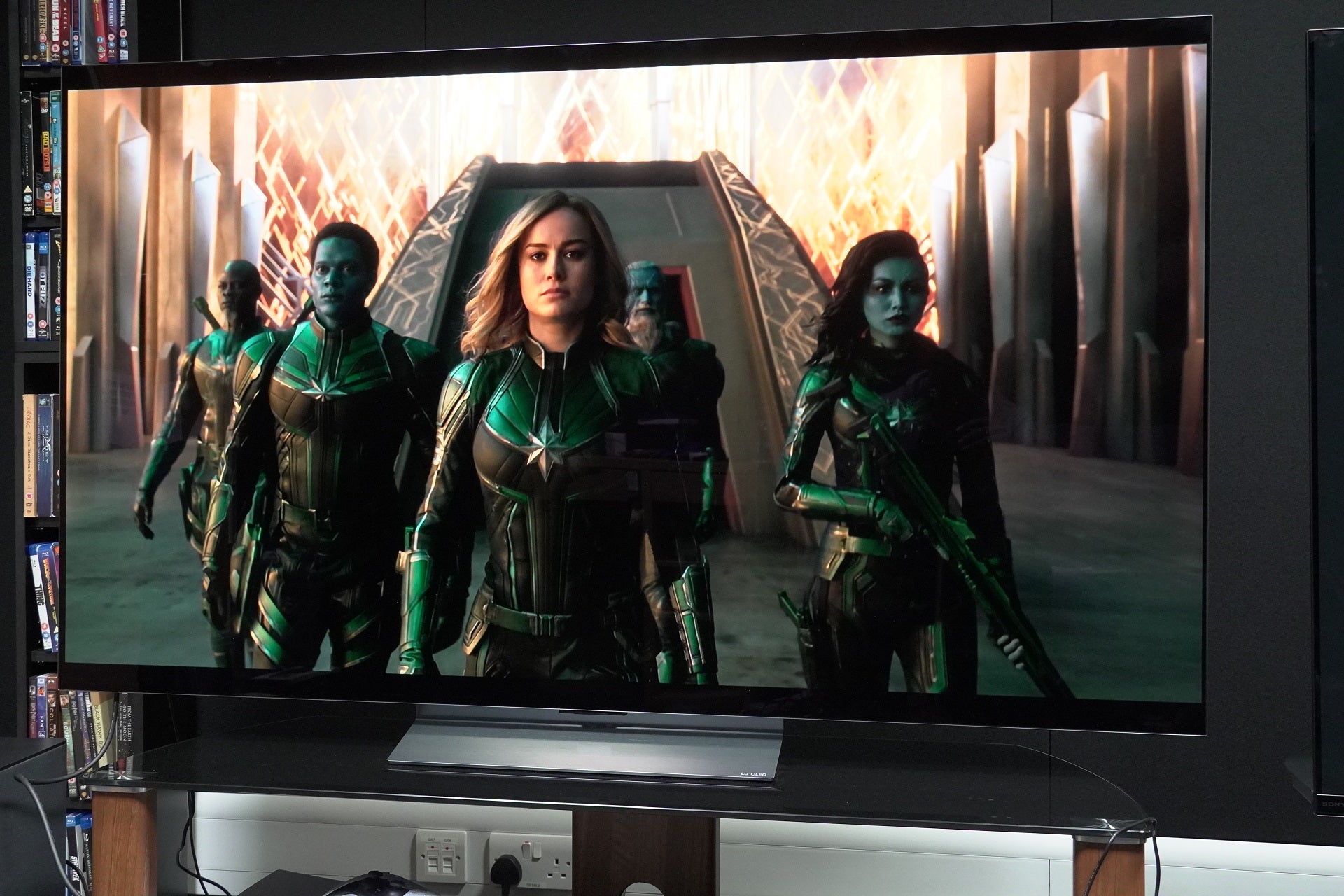Samsung QE55QN90C Review
Samsung's step-down Neo QLED is a bright and punchy effort
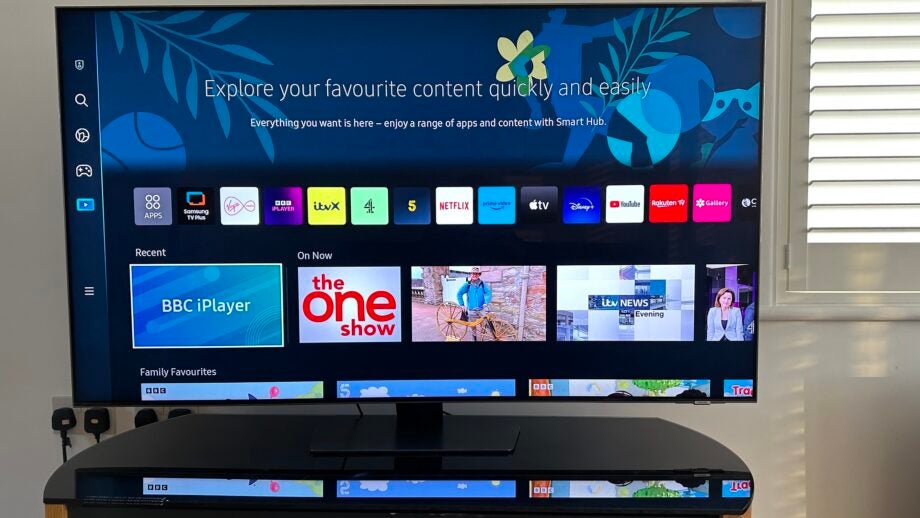

Verdict
It’s got the looks, for sure, and in many ways the QE55QN90C has got what it takes where performance is concerned too… but it’s not the complete package, and consequently not your only choice when it comes to spending this sort of money.
Introduction
It might be more obviously excited about QD-OLED, Micro-LED and 8K television technologies, but Samsung hasn’t forgotten Mini-LED (or Neo QLED, as it rather self-importantly prefers).
2023’s QN90C range is extensive – from 43- up to 85-inches – and priced to go up against some fairly premium offerings from all the obvious rivals. According to all the data, though, the 55-inch screen size is the UK’s most popular these days – so let’s find out if the QE55QN90C has what it takes…
The Samsung QE55QN90C sells in the UK for around £2299. The going rate in America is $2699 or something quite like it, while Australian customers should expect to part with AU$3299 or thereabouts.
It should be noted that the QN90C range includes 43-, 50-, 65-, 75-, and 85-inch versions as well as this 55-inch model. There are some quite marked differences between them, though, even going as far as screen refresh-rate and screen type. This review, then, should only be applied to this 55- and the 65-inch models…
Design
- Slim depth
- Good build quality
- No One Connect box supplied
The pros and cons of the way Mini LED technology performs will be dealt with soon enough – but where design is concerned, it’s an unqualified success. The QE55QN90C is a slim 26mm deep – and, unlike OLED TVs that are super-skinny right until they get a bit far, that’s a smoothly consistent depth too.
So if you want to hang your new TV on the wall, this Samsung should be a strong contender. It’s even got some basic cable-management built into the rear of its chassis to make the process easier.
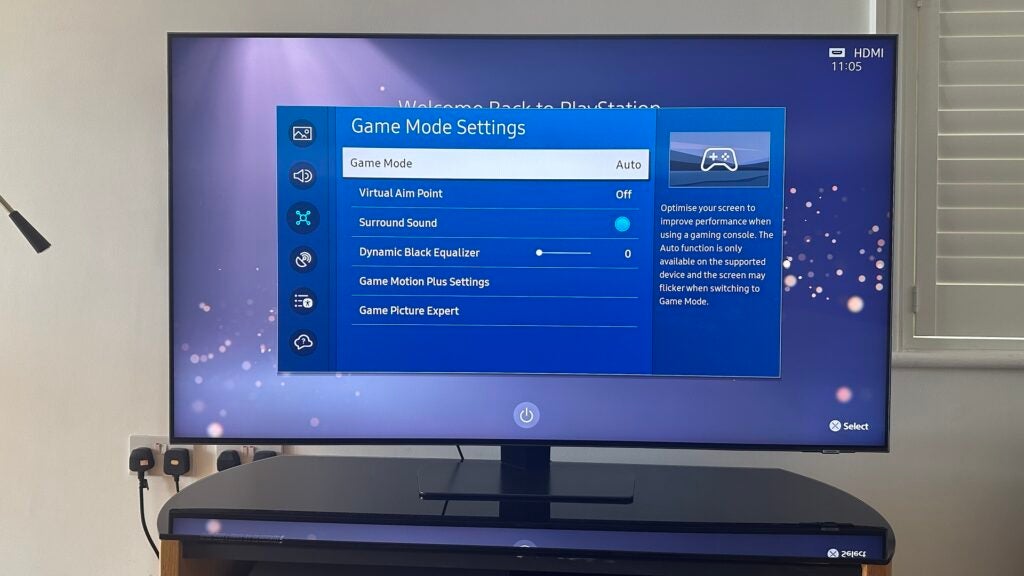
Even if you decide against wall-hanging, the QN90C wants to make your life as easy as possible. It is supplied with a small (338 x 237mm), sturdy central pedestal that will fit comfortably on even a little surface – and it adds slightly less than 3kg to the screen’s 17.7kg weight. It also raises the bottom of the screen to a point where all but the beefiest soundbars will fit nicely beneath it.
Build quality is everything I’ve all come to expect of Samsung – which is, for the avoidance of doubt, a good thing. The plastics that make up most of the chassis look and feel very decent, and the dark grey metal surrounding the screen is pleasant too. The bezels surrounding the screen when you’re viewing from dead ahead are about as minimal as it’s possible for them to be. No, the QE55QN90C is not an inexpensive television – but then it doesn’t look or feel it, either.
Features
- 4 x HDMI 2.1
- Numerous control options
- No Dolby Vision HDR
One of these days, Samsung will just bite the bullet and start including Dolby Vision HDR compatibility as part of the specification of its 4K TVs. This, sadly, is not that day.
In pretty much every other respect, though, the QE55QN90C is very well specified. Its IPS panel refreshes at a native 120Hz and is controlled by the Neural Quantum Processor 4K (a close relative of which has been in charge of Samsung’s 8K TVs for a little while now).
It uses neural network models in conjunction with machine learning and AI to deliver upscaling of sub-4K content that is, according to Samsung, indistinguishable from native 4K stuff. So its importance when fitted to an 8K model becomes obvious.
HDR compatibility runs to HLG, HDR10, HDR10+ Adaptive and HDR10+ Gaming. Using AI to analyse the environment in which it finds itself, HDR10+ Adaptive assesses room brightness, lighting and even screen reflectivity to optimise picture quality – even if the ambient conditions fluctuate.
The Samsung uses Bluetooth 5.2 and dual-band Wi-Fi for wireless connectivity. The physical connections include a couple of USB slots, an Ethernet socket, aerial binding posts for the screen’s twin TV tuners, a digital optical socket and four HDMI inputs. One of the HDMI inputs takes care of eARC responsibilities, and all four are at full HDMI 2.1 standard. This means all your games console’s sophisticated features – 4K/120Hz, ALLM, VRR, AMD FreeSync Premium Pro and all the rest – can be fully exploited by the QN90C.
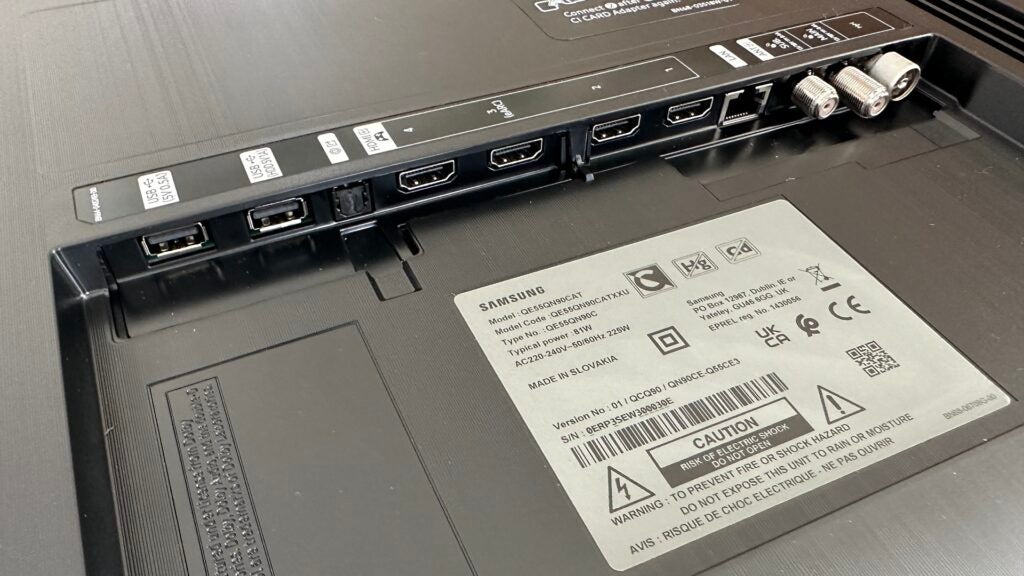
Sound is provided by a 4.2.2 -channel, 60-watt version of Samsung’s Object Tracking Sound+ technology – it attempts to steer sound in relation to the on-screen action. The Samsung is Dolby Atmos compatible – but that means only that it can understand a Dolby Atmos soundtrack, rather than creating any sensation of spatial audio. And the QN90C is a member of the Q Symphony range of Samsung products – so an appropriate soundbar will allow the screen’s audio system to contribute to the sound, rather than overriding it.
Getting the QN90C to the point that you’re completely happy with its picture (and audio) performance is straightforward enough. The set-up menus strike a nice balance between brief and thorough – and the screen will even do most of the legwork for you, thanks to its Adaptive Picture mode. This lets the screen take account of its environment and optimise its images accordingly – they’re always a little bright at the end of this process, sure – but it’s not difficult to back off the brightness just a little after the screen has done its thing.
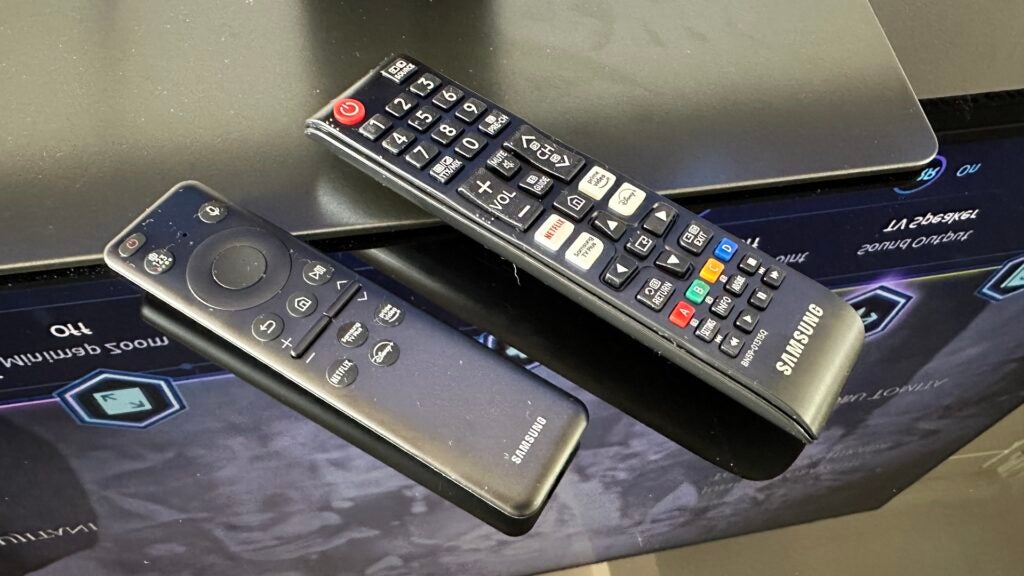
You can navigate the set-up menus, and the full-screen Tizen-based smart TV interface, using either voice assistance, the SmartThings control app or one of the two bundled remote control handsets. The smart TV interface is a bit pushy and loud and takes its time to learn what’s worth recommending – but it’s absolutely stacked with catch-up and streaming service apps of lesser or greater importance.
The QN90C is compatible with Bixby (naturally), Amazon Alexa and Google Assistant, and Siri is available via Apple AirPlay 2 as well. The SmartThings app is thorough and usable, with a lot of extended SmartThings functionality – it’s a pity it’s quite anonymous to look at.
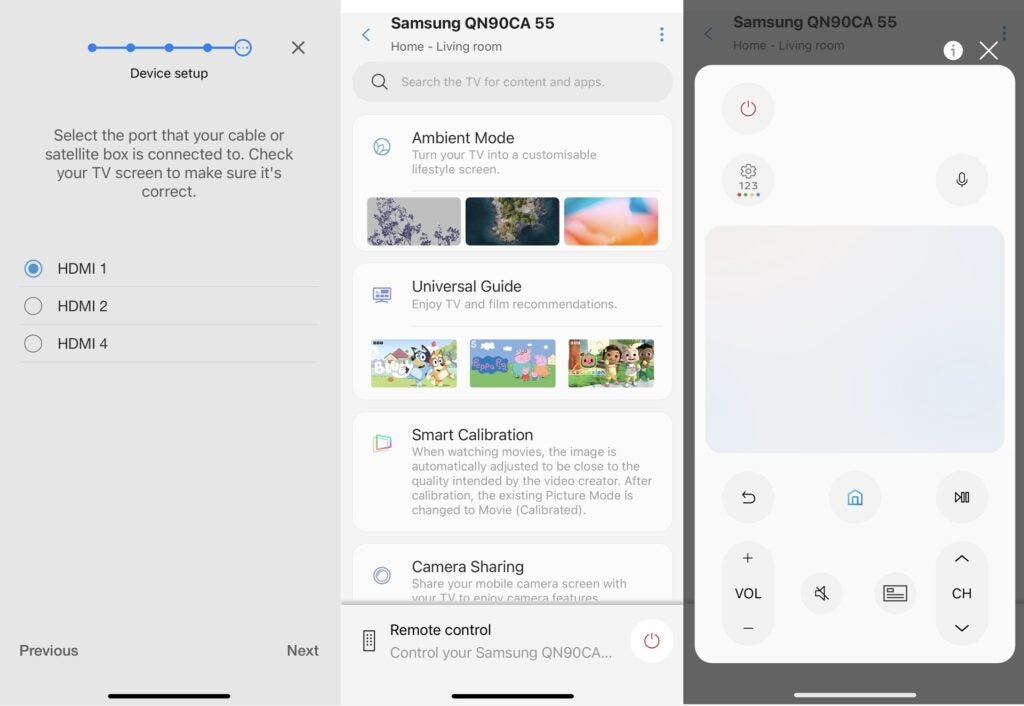
And the two remote controls follow the established template: one is small and nasty, covered in buttons that are random in layout and small in size, while the other is small and pleasant, features just a few essential buttons and is altogether nicer to use. The first is powered by AAA batteries, the second can have its battery recharged using USB-C or the little strip of solar material on its back surface.
For the QN90C, Samsung has integrated the third version of its ‘Game Bar’ feature. It makes adjusting screen ratios, sorting out headset setting, checking on input lag and all the rest of it very easy indeed – a single button-press summons the bar and there’s no need to go trawling through the main menus. For v3.0 it’s gained ‘minimap’ and ‘virtual aim point’ features – and when you consider the Samsung’s extremely rapid response times when in game mode, it makes the QN90C a truly viable option as a gaming monitor.
Picture Quality
- Bright and punchy images
- Great colour fidelity
- Some backlighting and black-tone issues
If you want to see a 4K HDR TV at its best, give it some 4K HDR content to deal with – ideally via a 4K UHD Blu-ray player. With the contents of a disc of The Suicide Squad on board, the Samsung QE55QN90C has plenty to recommend it.
For starters, it’s bright. Really bright. Straight from the box it’s all a bit much, but once I dial the brightness down to tolerable levels the Samsung delivers punchy, clean, varied and properly detailed white tones – no drawing the curtains to enjoy your viewing with this TV. With movies and games alike, lighting effects both glaring and subtle get full expression.
It’s similarly accomplished in the way it deals with colours, too. There’s lividity to the palette that needs a little calming down in the set-up menus, but once that’s done the Samsung turns in a convincingly naturalistic, vibrant performance. Detail levels, again, are extremely high, and the amount of fine variation in tone and shade this TV can muster is really impressive too. The balance the QE55QN90C strikes where skin-tones in particular are concerned gives character to shades and complexions of all kinds.
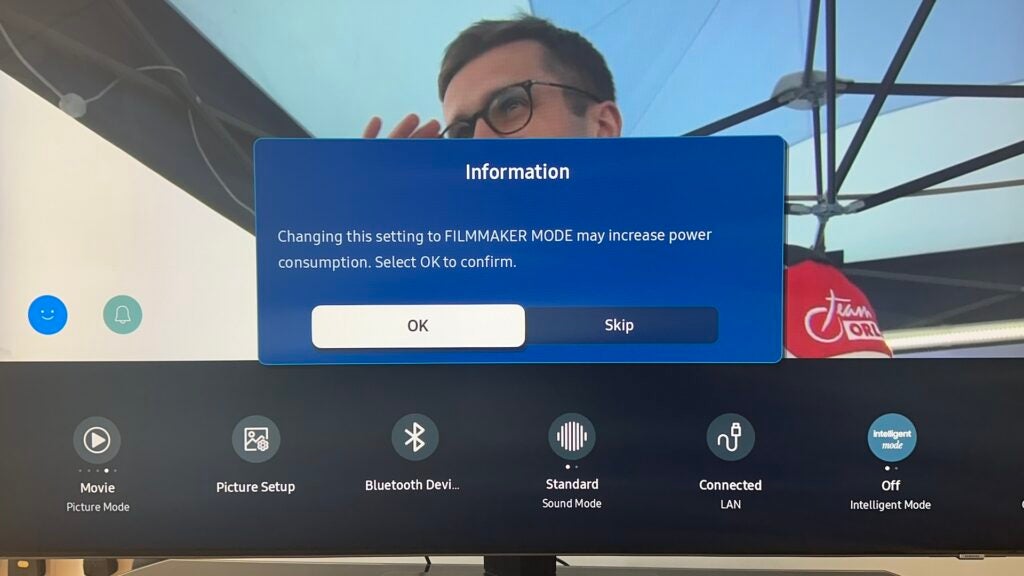
When it comes to black tones, though, the QN90C is on slightly shakier ground. It’s pointless to expect a backlit LED panel to get anywhere OLED levels of black-tone depth or purity, of course – but not only does the Samsung stop slightly short of ‘true’ black, but it also lets its backlighting become apparent during dark scenes with small areas of light. Mini LED offers more, and smaller, dimming zones than the standard LED backlighting alternative – but in the case of the QN90C, those zones aren’t super-fast in their responses and aren’t quite as accurately targeted as they might be.
And there are equally minor, but equally obvious, issues where motion-control is concerned. In almost every circumstance, the Samsung controls on-screen movement confidently – rapid pans, movement in opposition to camera movement, multiple directions of travel in the same scene (the sort of thing that televised sport, for example, is always full of)… none of these cause even the faintest of alarms.
But when the motion is languid, when the camera pans slowly and lazily across an area of uniformity, the QE55QN90C displays some hesitancy. It’s not a fatal flaw by any means, but the fact that it’s apparent at all means the screen isn’t as well-sorted as it really ought to be.
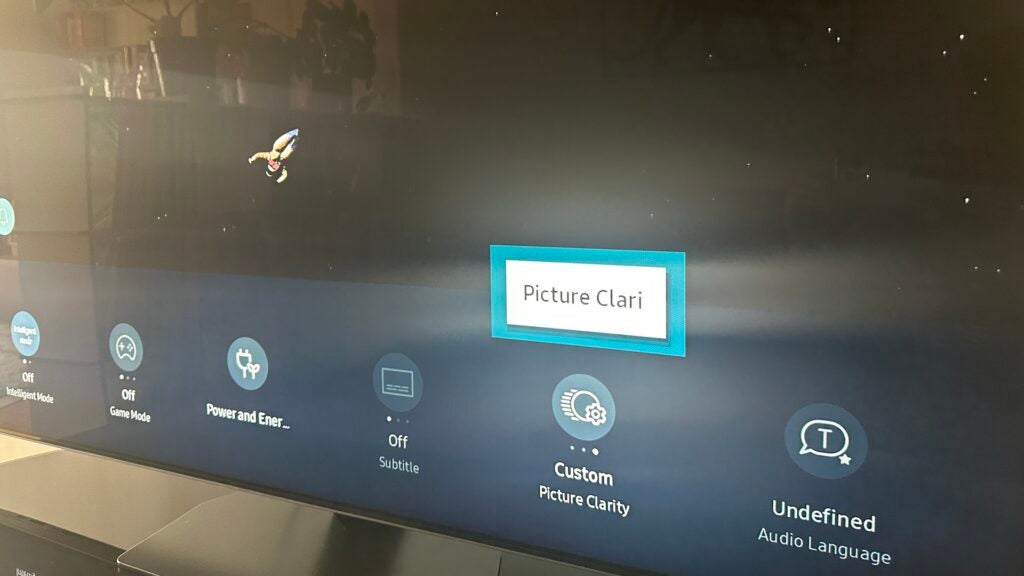
Elsewhere, though, the Samsung reverts to confident, accomplished type. It defines edges with complete positivity, and even when they’re buried deep in the background, they’re smooth and convincing. Depth of field is considerable, which means the QN90C’s images are approaching three-dimensional in the most extreme cases. The control it exerts over tight, complicated patterns is absolute, too.
And when it comes to upscaling sub-4K content, only the most low-resolution stuff creates a problem – for Full HD broadcasts or even 720p DVD content, the Samsung’s processing power is such that all the picture positives outlined above still apply.
Sound Quality
- Lacks substance and punch
- Not especially relaxing at the top end
- Object Tracking Sound+ is underwhelming
For a system that’s packing 60 watts of power to drive eight carefully positioned speaker drivers, there’s a strange and unwelcome diffidence about the way the Samsung QE55QN90C sounds.
Tonality, for example, is rather skewed – at the top of the frequency range it’s uncomfortably assertive, more than ready to get a bit edgy if you decide to listen at bigger volumes. The opposite end of the frequency range, though, is underrepresented – bass presence is minimal, and there’s little punch or body to the Samsung’s sound.
And the Object Tracking Sound+ technology isn’t especially well implemented, either. There’s no real suggestion the sound the TV produces is following the on-screen information – the best you can hope for, it seems, is for silence from some of the drivers when the action is far from their position. So the sound doesn’t so much move as get switched on and off.
There’s plenty of room beneath the screen for a soundbar, though. Probably best to budget for one when you’re pricing your new TV up…
Latest deals
Should you buy it?
You want a TV that’s going to look great hanging on your wall: A smoothly consistent 26mm depth means the QE55QN90C will sit more-or-less flush to the wall and look the business while it’s there.
You’re after as much picture performance as this money will buy: In some ways this Samsung is a profoundly accomplished television – but its few shortcomings mean it’s far from a default choice.
Final Thoughts
To be perfectly honest I didn’t see this coming. Samsung, as everybody knows, has plenty of form when it comes to turning out competitive TVs – so the issues the QE55QN90C has, especially where picture quality is concerned, are as surprising as they are unwelcome.
If you’re after a skinny object that also functions as a television, it’s hard to go wrong here – but you’ll have to make compromises where performance is concerned.
How we test
We test every television we review thoroughly over an extended period of time. We use industry standard tests to compare features properly. We’ll always tell you what we find. We never, ever, accept money to review a product.
Find out more about how we test in our ethics policy.
Tested for more than a week
Tested with real world use
FAQs
The Samsung QN90C has a native screen refresh of 120Hz. For PC gaming, it supports refresh rates up to 144Hz.
Full specs
Sustainability
Trusted Reviews’ holds the fact that global warming is not a myth as a core value and will continuously endeavour to help protect our planet from harm in its business practices.
As part of this mission, whenever we review a product we send the company a series of questions to help us gauge and make transparent the impact the device has on the environment.
We currently haven’t received answers to the questions on this product, but will update this page the moment we do. You can see a detailed breakdown of the questions we ask and why in our sustainability info page.


